From the quiet bravery of freedom seekers on the Underground Railroad to the bold stand of the Greensboro Four, Greensboro has long been a stage for courage, resistance, and change. Greensboro’s Black history is American history—alive, enduring, and still shaping the future. Walk in the footsteps of heroes. Follow our trail to discover the sites where Black history was made—and continues to inspire.
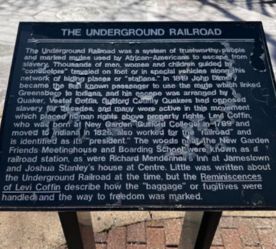 Start your journey in the Guilford Woods behind Guilford College, where you'll find the old-growth Tulip Tree dating back to pre-1800. The tree was present during the documented operation of the Underground Railroad. The tree stood as a silent witness to the lives and actions of African Americans and their white allies. Take time to reflect while overlooking the vast Guilford Woods.
Start your journey in the Guilford Woods behind Guilford College, where you'll find the old-growth Tulip Tree dating back to pre-1800. The tree was present during the documented operation of the Underground Railroad. The tree stood as a silent witness to the lives and actions of African Americans and their white allies. Take time to reflect while overlooking the vast Guilford Woods.
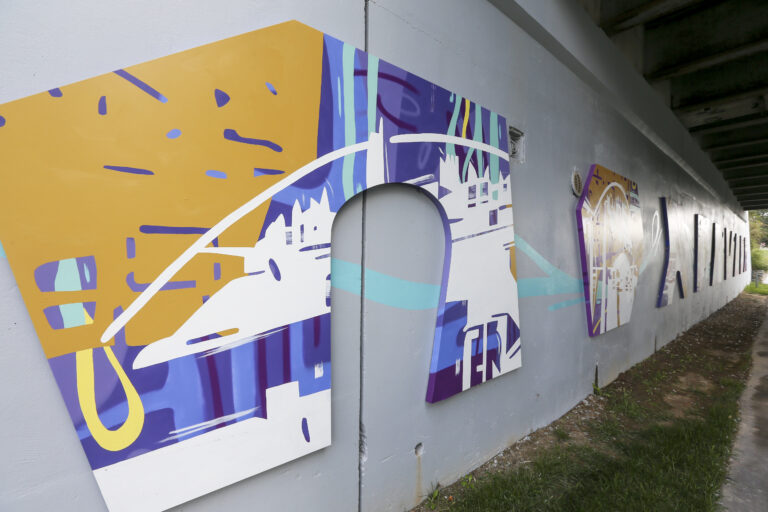 On your way downtown, stop along the greenway to visit The Modern Love murals, featuring imagery of architecture by mid-century black architects in Greensboro. The shaped metal canvases symbolize freedom and movement, lush purple backgrounds represent royalty and power, and the red and yellow patterns are taken from redline maps of Greensboro, where African Americans were isolated to living in areas considered poor investments.
On your way downtown, stop along the greenway to visit The Modern Love murals, featuring imagery of architecture by mid-century black architects in Greensboro. The shaped metal canvases symbolize freedom and movement, lush purple backgrounds represent royalty and power, and the red and yellow patterns are taken from redline maps of Greensboro, where African Americans were isolated to living in areas considered poor investments.
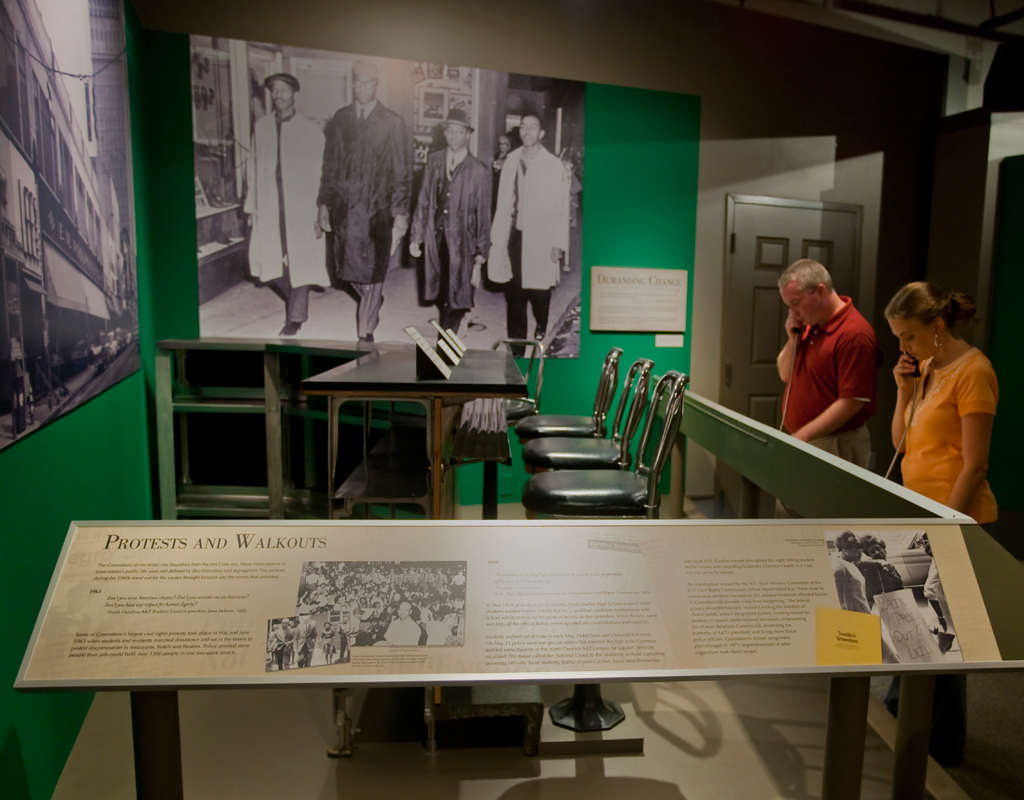 Continue downtown to the Greensboro History Museum, where you'll find multiple exhibits honoring Greensboro's black history, from a section of the original lunch counter where the A&T Four started their famous 1960 sit-in to Greensboro's first black female TV news personality and many more stories of courage and perseverance. The museum is free.
Continue downtown to the Greensboro History Museum, where you'll find multiple exhibits honoring Greensboro's black history, from a section of the original lunch counter where the A&T Four started their famous 1960 sit-in to Greensboro's first black female TV news personality and many more stories of courage and perseverance. The museum is free.
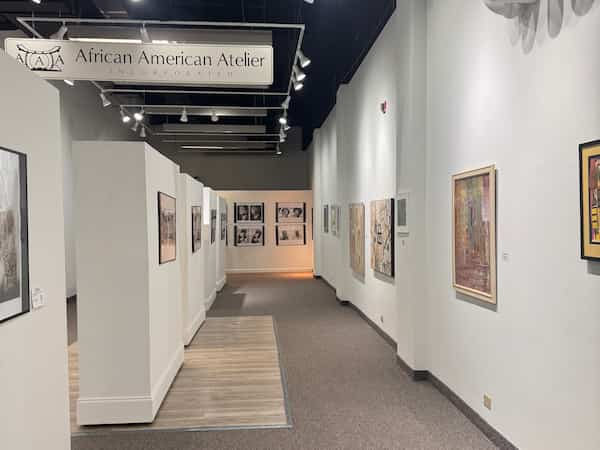 From the Greensboro History Museum, walk to the nearby Greensboro Cultural Center, where you'll find the African American Atelier designed to support and present the work of artists of color. The Atelier showcases 10+ exhibits each year.
From the Greensboro History Museum, walk to the nearby Greensboro Cultural Center, where you'll find the African American Atelier designed to support and present the work of artists of color. The Atelier showcases 10+ exhibits each year.
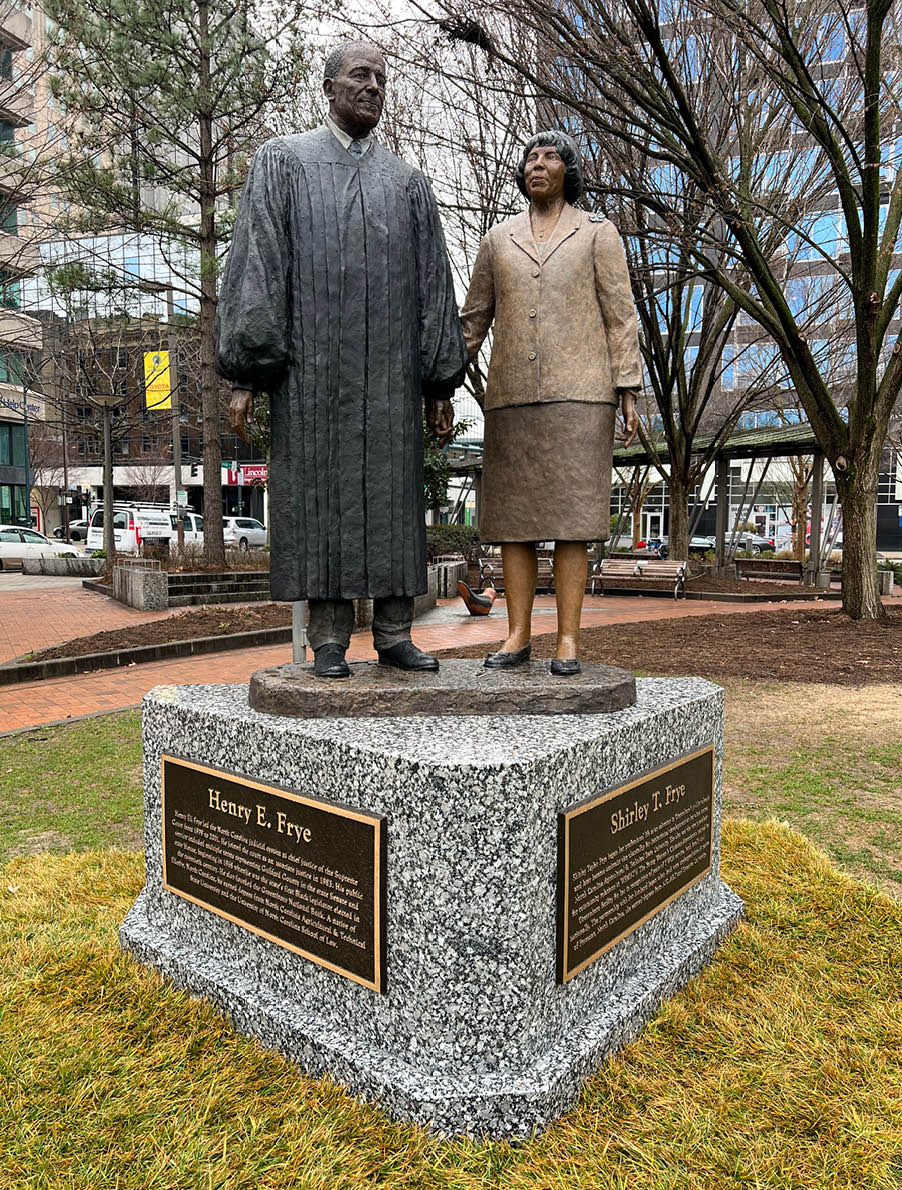 Head across the street to Center City Park, where you'll find a statue honoring Henry and Shirley Frye for their numerous achievements. Henry Frye served as the first black Chief Justice of the North Carolina Supreme Court, while Shirley made a name for herself as a community leader and activist. Both graduated from NC A&T State University.
Head across the street to Center City Park, where you'll find a statue honoring Henry and Shirley Frye for their numerous achievements. Henry Frye served as the first black Chief Justice of the North Carolina Supreme Court, while Shirley made a name for herself as a community leader and activist. Both graduated from NC A&T State University.
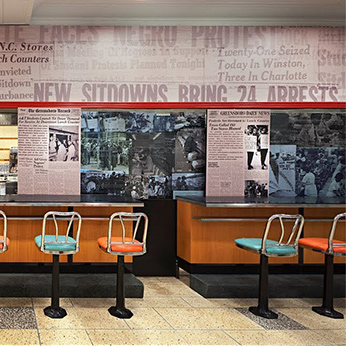 Your next stop is just a short walk away to the International Civil Rights Center and Museum, the site of the former F.W. Woolworth's store where four black students from NC A&T State University started a sit-in at the whites-only lunch counter on February 1, 1960. This peaceful protest helped spark the modern Civil Rights Movement.
Your next stop is just a short walk away to the International Civil Rights Center and Museum, the site of the former F.W. Woolworth's store where four black students from NC A&T State University started a sit-in at the whites-only lunch counter on February 1, 1960. This peaceful protest helped spark the modern Civil Rights Movement.
The museum houses the restored original lunch counter and stools from the Woolworth's store, plus artifacts, interactive exhibits, and narratives reflecting the fight for equality.
Tickets are required for entry.
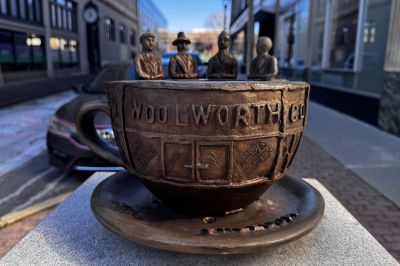 As you leave the International Civil Rights Center & Museum, stop at the front corner of the building (February 1 Place at S. Elm Street) to admire the Cup of Freedom statue commemorating the sit-in.
As you leave the International Civil Rights Center & Museum, stop at the front corner of the building (February 1 Place at S. Elm Street) to admire the Cup of Freedom statue commemorating the sit-in.
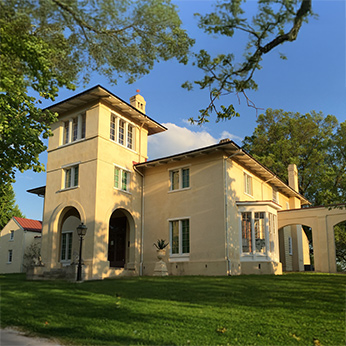 A short walk or drive will take you to the Blandwood Museum. This National Historic Landmark is the prototype for the Italianate style, one of America's most popular architectural genres of the 19th century. Among the exhibits is the story of those enslaved at the mansion.
A short walk or drive will take you to the Blandwood Museum. This National Historic Landmark is the prototype for the Italianate style, one of America's most popular architectural genres of the 19th century. Among the exhibits is the story of those enslaved at the mansion.
LEARN MORE ABOUT BLACK AND WHITE ROLES AND RESPONSIBILITIES AT BLANDWOOD
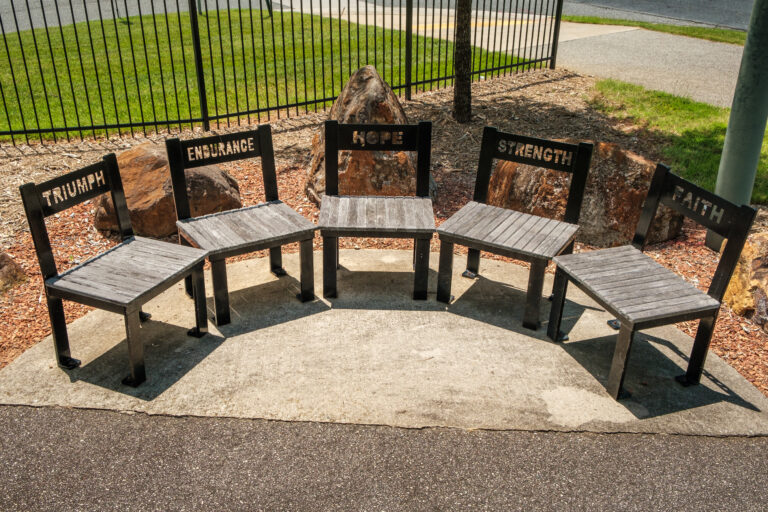 The next stop takes you back to the Downtown Greenway and the Five Points Bench, representing the Warenersville neighborhood. Warnersville was Greensboro's first African American community, formerly called Five Points.
The next stop takes you back to the Downtown Greenway and the Five Points Bench, representing the Warenersville neighborhood. Warnersville was Greensboro's first African American community, formerly called Five Points.
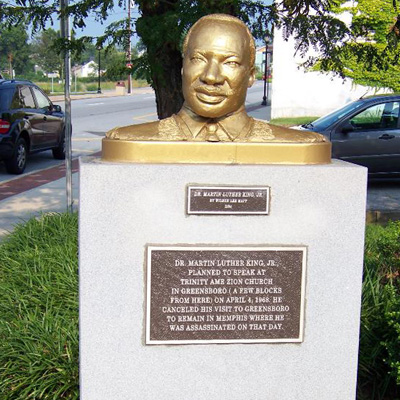 Continue your walk along the Greensboro Downtown Greenway to the Martin Luther King, Jr. statue, a bronze bust of the late Civil Rights leader. The plaque recognizes Dr. King's planned speech at a nearby church on April 4, 1968, which he canceled to remain in Memphis, TN, where he was assassinated that day.
Continue your walk along the Greensboro Downtown Greenway to the Martin Luther King, Jr. statue, a bronze bust of the late Civil Rights leader. The plaque recognizes Dr. King's planned speech at a nearby church on April 4, 1968, which he canceled to remain in Memphis, TN, where he was assassinated that day.
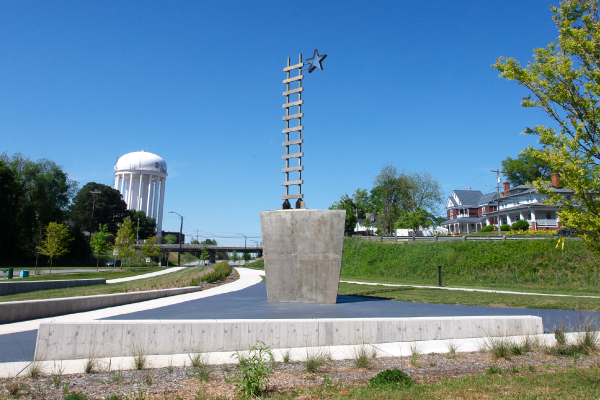 The next stop along the Downtown Greenway takes you to Ascension, the centerpiece of the Freedom Cornerstone. Ascension acknowledges and honors Greensboro's role in the Civil Rights Movement.
The next stop along the Downtown Greenway takes you to Ascension, the centerpiece of the Freedom Cornerstone. Ascension acknowledges and honors Greensboro's role in the Civil Rights Movement.
VISIT THE FREEDOM CORNERSTONE/ASCENSION
End your downtown Greensboro black history tour at the Historic Magnolia House. The Magnolia house is one of maybe four Green Book sites in North Carolina still operating. Some of our nation's most well-known African Americans stayed at Magnolia House during segregation. Today, the house serves as an event venue, restaurant, and bed and breakfast.
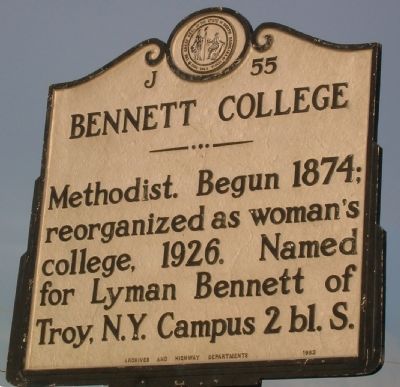 In addition to downtown, much of the city's black history sites are in East Greensboro. Start with a stop at Bennett College, a private historically black college (HBCU) for women. Willa Beatrice Player was installed as the university's president in 1956, becoming the first female African American president of an accredited, four-year liberal arts college. A few years later, Bennett Belles sat by their counterparts from nearby NC A&T State University during the infamous 1960 sit-in.
In addition to downtown, much of the city's black history sites are in East Greensboro. Start with a stop at Bennett College, a private historically black college (HBCU) for women. Willa Beatrice Player was installed as the university's president in 1956, becoming the first female African American president of an accredited, four-year liberal arts college. A few years later, Bennett Belles sat by their counterparts from nearby NC A&T State University during the infamous 1960 sit-in.
While at Bennett, visit the Steel Hall Gallery, which exhibits contemporary black artists and showcases the school's collection of paintings, sculptures, and African artifacts.
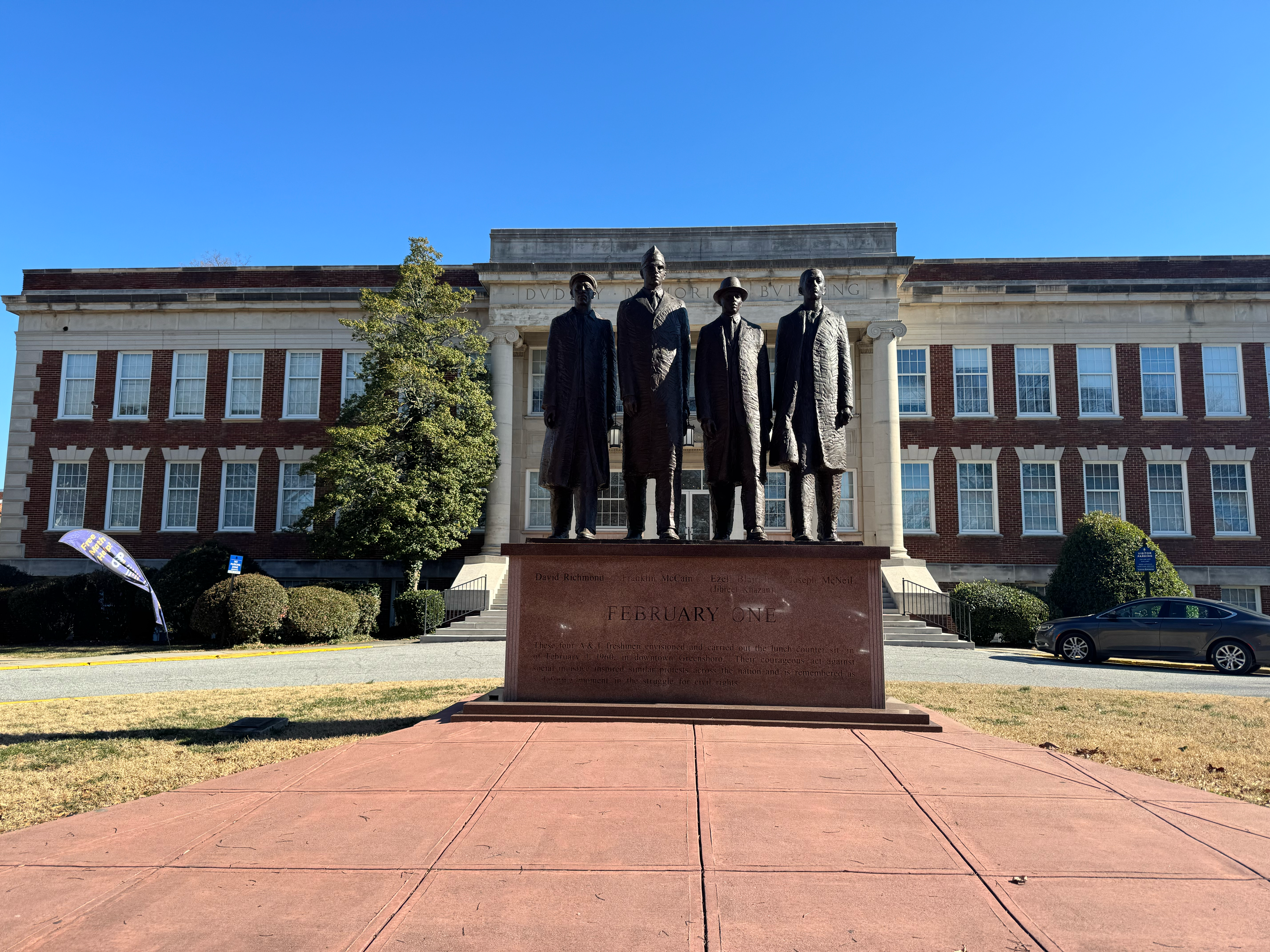 No black history tour of Greensboro is complete without a stop at NC A&T State University. Today, A&T is the largest historically black college (HBCU) in the country and a leader in STEM education. Famous alumni include civil rights activist, the Rev. Jesse Jackson; Dr. Ronald McNair, NASA astronaut in the 1986 space shuttle Challenger tragedy; and the A&T Four - Jibreel Khazan, Gen. Joseph McNeil, Franklin McCain, and David Richmond, who started the February 1, 1960 sit-in at the nearby F.W. Woolworth's lunch counter.
No black history tour of Greensboro is complete without a stop at NC A&T State University. Today, A&T is the largest historically black college (HBCU) in the country and a leader in STEM education. Famous alumni include civil rights activist, the Rev. Jesse Jackson; Dr. Ronald McNair, NASA astronaut in the 1986 space shuttle Challenger tragedy; and the A&T Four - Jibreel Khazan, Gen. Joseph McNeil, Franklin McCain, and David Richmond, who started the February 1, 1960 sit-in at the nearby F.W. Woolworth's lunch counter.
While on campus, visit the statue honoring the A&T Four. The statue stands in front of the Dudley Building, which houses the University Galleries, comprised of the H.C. Taylor Gallery and Mattye Reed Gallery. The galleries have been called the Southeast's largest repository of the history of culture and African American life in North Carolina.
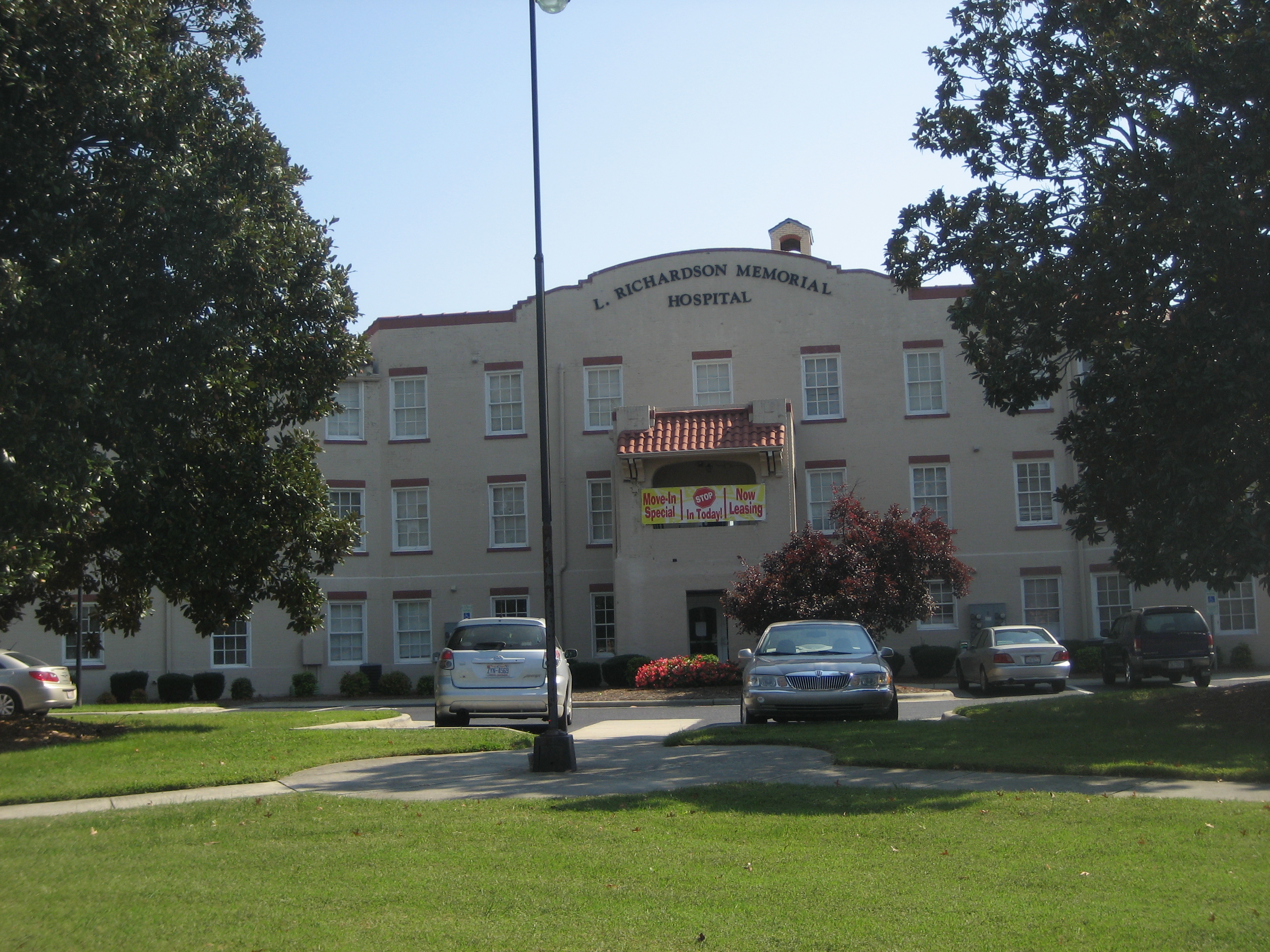 Next, stop at the corner of East Washington Street and East Benbow Road to learn more about the former L. Richardson Memorial Hospital. It was the first modern African American hospital in Greensboro, built to meet the needs of Greensboro's African American residents during segregation. The hospital began taking patients in May 1927 and was renamed the L. Richardson Memorial Hospital after Lunsford Richardson, a pharmacist and founder of the Vick Chemical Company, known for inventing Vick's VapoRub. The property now operates as Richardson Hospital Apartments.
Next, stop at the corner of East Washington Street and East Benbow Road to learn more about the former L. Richardson Memorial Hospital. It was the first modern African American hospital in Greensboro, built to meet the needs of Greensboro's African American residents during segregation. The hospital began taking patients in May 1927 and was renamed the L. Richardson Memorial Hospital after Lunsford Richardson, a pharmacist and founder of the Vick Chemical Company, known for inventing Vick's VapoRub. The property now operates as Richardson Hospital Apartments.
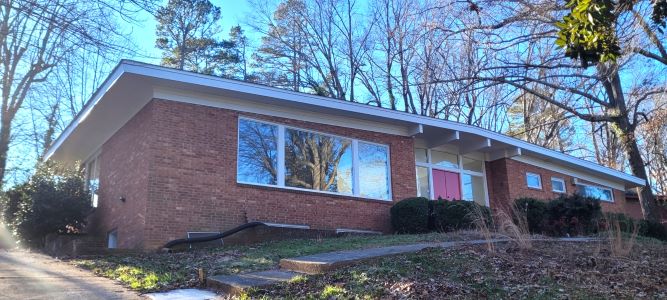 Continue down Benbow Road and explore the South Benbow Road Historic District. It was the first historically Black neighborhood in Greensboro added to the National Register of Historic Places. The district is characterized by mid-century modern homes and churches designed and built by Black professionals. The area was home to many notable Civil Rights leaders. LEARN MORE ABOUT THE SOUTH BENBOW ROAD HISTORIC DISTRICT
Continue down Benbow Road and explore the South Benbow Road Historic District. It was the first historically Black neighborhood in Greensboro added to the National Register of Historic Places. The district is characterized by mid-century modern homes and churches designed and built by Black professionals. The area was home to many notable Civil Rights leaders. LEARN MORE ABOUT THE SOUTH BENBOW ROAD HISTORIC DISTRICT
 Dudley High School was the first public high school for Black students in Guilford County. Founded in 1929, Dudley became a hub for activists, including the men now known as the Greensboro 4. Dudley students joined the four alumni during the sit-in at Greensboro's Woolworth's store. In 1969, a controversial election for student body president turned into a revolt against police repression and racial segregation. The National Guard stormed nearby NC A&T State University, an affair now known as the A&T/Dudley Revolt. LEARN MORE ABOUT DUDLEY HIGH SCHOOL
Dudley High School was the first public high school for Black students in Guilford County. Founded in 1929, Dudley became a hub for activists, including the men now known as the Greensboro 4. Dudley students joined the four alumni during the sit-in at Greensboro's Woolworth's store. In 1969, a controversial election for student body president turned into a revolt against police repression and racial segregation. The National Guard stormed nearby NC A&T State University, an affair now known as the A&T/Dudley Revolt. LEARN MORE ABOUT DUDLEY HIGH SCHOOL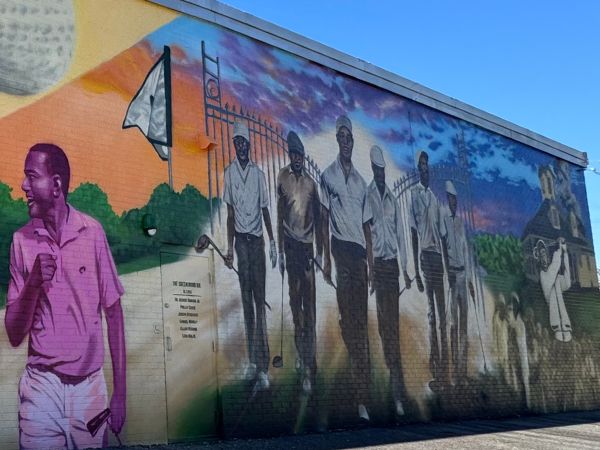 Honor the Greensboro Six with a stop at Gillespie Golf Course. The city-owned course was operated privately as a whites-only facility. On December 7, 1955, the Greensboro Six - Phillip Cooke, Samuel Murray, Elijah Herring, Joseph Studivent, Dr. George Simkins, Jr., and Leon Wolf - entered the Gillespie Golf Course, put a $0.75 entry fee on the counter, and teed up. The men played nine holes before being arrested and convicted of trespassing. Due to a related federal court case, Gillespie was to be integrated, but the clubhouse was torched the day before that was scheduled to happen.
Honor the Greensboro Six with a stop at Gillespie Golf Course. The city-owned course was operated privately as a whites-only facility. On December 7, 1955, the Greensboro Six - Phillip Cooke, Samuel Murray, Elijah Herring, Joseph Studivent, Dr. George Simkins, Jr., and Leon Wolf - entered the Gillespie Golf Course, put a $0.75 entry fee on the counter, and teed up. The men played nine holes before being arrested and convicted of trespassing. Due to a related federal court case, Gillespie was to be integrated, but the clubhouse was torched the day before that was scheduled to happen.
Today, Gillespie remains a nine-hole, city-owned course with two markers honoring the Greensboro Six. A mural was unveiled in 2024.
LEARN MORE ABOUT GILLESPIE GOLF COURSE AND THE GREENSBORO SIX
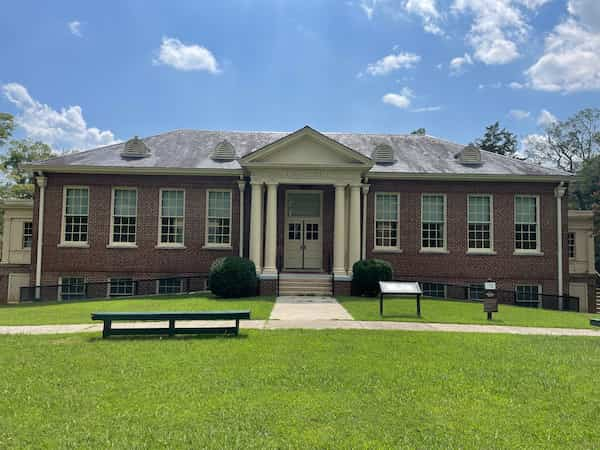 A short drive east of Greensboro will take you to the Charlotte Hawkins Brown Museum and the Palmer Memorial Institute. The institute, founded in 1902 by Dr. Charlotte Hawkins Brown, became a world-renowned boarding school for Black children and teens. Today, the museum links Dr. Brown and the Palmer Memorial Institute to the larger themes of African American history, women's history, social history, and education, emphasizing the contributions of African Americans in North Carolina.
A short drive east of Greensboro will take you to the Charlotte Hawkins Brown Museum and the Palmer Memorial Institute. The institute, founded in 1902 by Dr. Charlotte Hawkins Brown, became a world-renowned boarding school for Black children and teens. Today, the museum links Dr. Brown and the Palmer Memorial Institute to the larger themes of African American history, women's history, social history, and education, emphasizing the contributions of African Americans in North Carolina.
 The final stop on the tour takes you back to Greensboro and the East White Oak Community Center. The East White Oak Community Center was established in 1916 as a school for children of African American employees of Cone Mills. The community center is the only remaining structure from the former mill village. The community center houses an interactive Civil Rights room commemorating David Richmond, one of the NC A&T Four, an East White Oak community native who helped launch the sit-in movement. The community center also contains a display about the community's textile roots, an outdoor sculpture garden, and a mural honoring founders, community groups, and leaders.
The final stop on the tour takes you back to Greensboro and the East White Oak Community Center. The East White Oak Community Center was established in 1916 as a school for children of African American employees of Cone Mills. The community center is the only remaining structure from the former mill village. The community center houses an interactive Civil Rights room commemorating David Richmond, one of the NC A&T Four, an East White Oak community native who helped launch the sit-in movement. The community center also contains a display about the community's textile roots, an outdoor sculpture garden, and a mural honoring founders, community groups, and leaders.

